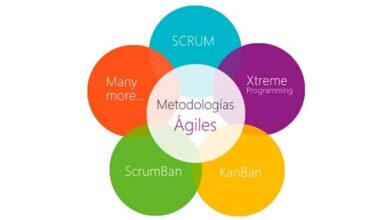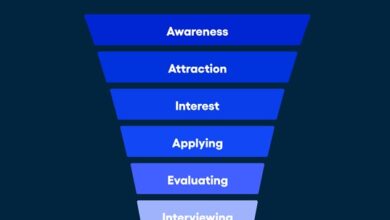Service design definition its Advantages and 8 Steps for service design
What is service design?
The definition of Service design is a roadmap that includes the steps and processes that a customer of a service will perform when using it. The ultimate benefit of service design is not to improve the aesthetic appearance of a product or service, but to improve its operability and efficiency.
Service design is a thought process that brings together design, web design, product design, graphic design, and business departments, such as consumer research , customer service, sales, and marketing, to deconstruct interaction and user experience with a product and service and rebuild it to improve it.
Service design is not only a logical and analytical approach to improving a service, but also a creative and innovative approach to the things that distinguish a product or service.
It means looking at your service from the customer‘s point of view and putting yourself in their shoes. Therefore, service design is a science and an art.
Advantages of service design
Service design ensures that users actually use the service as intended and that positive experiences are created , minimizing the need for costly and time-consuming customer service.
Participating in a service design process benefits an organization in several ways:
1-Improve sales
The application of the service design framework helps a company understand the needs, demands and expectations of the customer , and create solutions according to them. Enrich the customer experience and create value for him.
Positive customer interaction with the product or service means its retention and, ultimately, greater success and profitability for the company.
2-Create loyalty
The latest challenge for companies in today’s competitive era is not only attracting new customers, but also retaining them for the long term. With the availability of a wide range of service options, customers can switch services and brands very easily and therefore have many options.
Therefore, companies have to find ways to make their service or product stand out from the competition. Service design enables companies to understand what customers are looking for and expecting from a service . This way they can make their offers more tailored and tailored to those needs.
3-Strengthen the brand and identity
The service design approach allows companies to reinforce their brand. The service design process helps managers move from the known to the unknown.
It consists of the basic and at the same time critical evaluation of how the new product or planned service fits into the image and the general objectives of the company. Thus, the process helps prevent you from straying from your core values and goals when offering a new service.
4-Improve the efficiency
Creative and imaginative steps in the service design process help companies improve the efficiency of their employees and procedures. Helps eliminate waste and enables team members to pinpoint areas where there is a drain on resources or to identify customer pain points .
Service design drawings help companies locate problem areas and potential points of failure. Involving teams in the service design process allows companies to see the big picture and place their role in it. It helps them understand why change and innovation in what they offer is necessary and how they offer it.
5-Reduce redundancies
Anticipating the entire cycle of the service design process allows companies to take a broader view of their service and eliminate duplicate segments. Helps managers detect where services may converge or overlap. In this way, inconsistencies and ambiguities within the process can be discovered and rectified. The disposal process saves energy, improves staff efficiency, and reduces costs.
Steps for service design
This process can be quite simple and straightforward or complex. The important thing is to ensure that even the smallest details are covered, problems are identified and rectified, promises are made, service is delivered, and expectations are met.
Step 1: Align Vision and Target
This step is the starting point of a service design process. In it, it is decided how the service fits into the company’s strategy.
This is how a service can be aligned with the image and values of the company:
- Put a product or service in the company’s overview statement.
- Think about how the design of a service supports the objectives of the company in the best possible way.
Step 2: Brainstorm
Getting ideas is easy and hundreds of ideas can be generated in no time; however, execution tests the viability of an idea. Here are some brainstorming tips to ensure a good idea doesn’t go to waste:
- Allow everyone to brainstorm ideas and participate equally in the service design process.
- Classify the ideas generated in the following general categories;
- Non-viable, absurd and unrealistic ideas.
- Ideas that are good but are not feasible or achievable at this time; they can be saved and used for later.
- Ideas that are original and that will make a difference.
- Ordinary ideas, but that must be included to achieve the minimum level of service.
- Write down, represent and discuss the ideas. In this way, practical ideas are automatically separated from impractical and absurd ones. As a result, you will be able to develop a process that marks the journey of users and develop a service process that can address the challenges that users faced. Service design definition
Step 3: Conduct a market analysis
Before launching a new service or making an improvement on an existing one, extensive research and market analysis is necessary to put the service in context. In this step, you and your team can do the following
- Analyze market size, trends, and service drivers.
- Understand the ways in which your service would address a gap in the existing market.
- Next, try to establish your own service posture, that is, know if you are breaking into a market as a new entrant, improving an existing service to satisfy and retain established customers, challenging your business competitors or wanting to coexist with them, or looking for ways to establish your company as a market leader.
- The needs of the service users and their possible tangible and intangible benefits for clients, such as cost savings or gains in terms of quality and convenience, must be taken into account.
- You also have to consider the pros and cons of launching the service at a certain time or not launching it at all.
Step 4: Identify Obstacles and Limitations
This is one of the important steps in the service design process, as it helps you put your ambitious ideas in the realistic realm.
- It allows all team members to critically evaluate their own ideas and those of others, and identify weaknesses and gaps to eliminate them.
- Identify internal and external obstacles to the implementation of the service.
- It also establishes the limitations and defines the limits within which you must place your service.
- Identify creative ways to get around these barriers and limitations.
Step 5: Establish the profile of your user persona
This is another critical step in the service design process. Imagine that you have already devoted a lot of time and energy to the design process and have thought about the service, the aspirations of your organization and the expectations, but you must answer the most important question: Who are the users of this service and how? are they going to use, and what are their expectations, hence the important thing to define your user persona .
- Develop different types of fictional characters or user profiles.
- Think about what they do, where they live, what they do, etc., and give them appropriate character traits.
- List the possible reasons for users to use your service when they have other options.
Step 6: Define a prototype and do a test
This important step provides a creative, fast, and inexpensive way to test service ideas. Provides a quick overview of what works and what doesn’t.
You can test the prototypes of a service with your employees and with some real users. Here’s how you should do it:
- Create mockups to create something as close to the real world as possible.
- Define the contact points where users will meet your service.
- Develop a step-by-step procedure of how they will interact with your service.
Step 7: Evaluate the user experience
The interaction of the clients with the service gives rise to the experience of the users. This aspect of the service design procedure ensures that the user experience with a service is the best.
It is about the feeling that the user is left with after using the service. For this you have to carry out user surveys or give them short questionnaires. You have to focus on two areas:
- Collect information from users about the features of the service that made them happy and created pleasant moments for them.
- Ask users about the characteristics of the service that they find unpleasant.
- Drill down into users and ask them if the service is easy to use, helpful to them in getting closer to their goals, or valuable enough that they want and pay for it.
Thoroughly researching customer expectations of a service will help service managers improve their design.
Step 8: Get feedback to improve the service
Service design is a cyclical process and it means collecting feedback and moving it forward. Therefore, you should gather all the information that you have learned and use it to:
- Identify the gaps and fill them
- Define how successful your service will be
- Develop metrics to measure success
- Incorporate the results into your final product.
- Decide if you want to launch a pilot version of the service or move to a full implementation.
Two companies may offer a similar service, but ultimately your design process will set it apart in how users will experience this service.
A better user experience is not just about creating the best product, but about how this product is delivered to the customer. The design of services is not only a process to improve it, but a process to touch and improve people’s lives.




